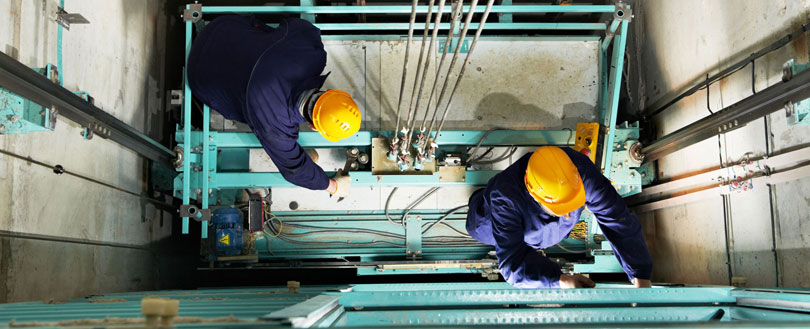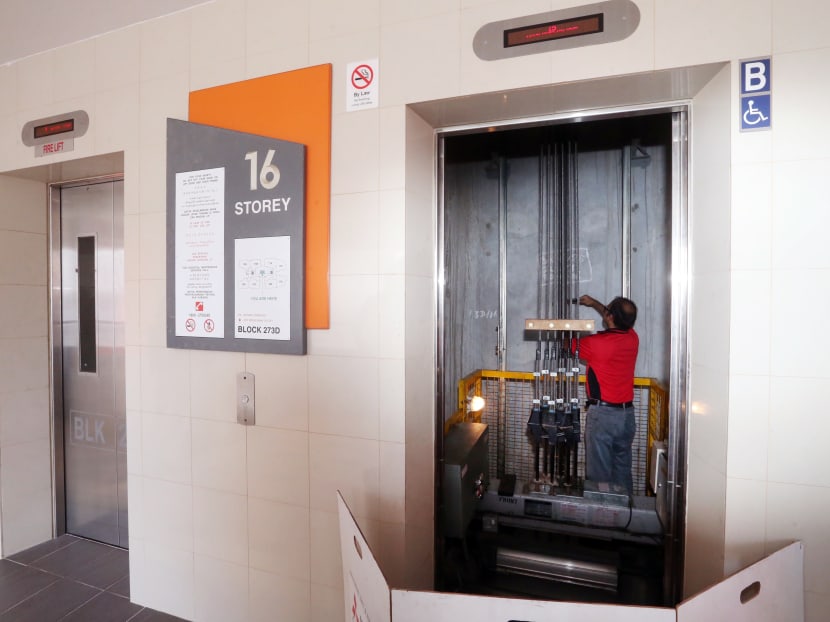Lift Maintenance Repair: Crucial Providers for Optimum Lift Efficiency
Lift Maintenance Repair: Crucial Providers for Optimum Lift Efficiency
Blog Article
Pro Tips for Keeping Your Lift in Leading Problem: An Extensive Introduction
Ensuring the optimal performance of a lift system is imperative for a efficient and secure operation in various setups, from industrial stockrooms to industrial structures. By adhering to an organized upkeep regimen and preemptively addressing prospective issues, lift proprietors can mitigate pricey downtime and security hazards.

Relevance of Routine Upkeep
Regular upkeep of your lift is essential to guarantee its optimal performance and long life. By adhering to a routine upkeep schedule, you can recognize and address prospective concerns before they rise into expensive repair work or unanticipated downtime. Routine upkeep jobs such as lubricating moving parts, checking for wear and tear, and inspecting hydraulic systems can aid prevent malfunctions and make certain safe operation.
Overlooking routine maintenance not only compromises the performance of your lift yet likewise poses safety threats to users and building. Parts that are not appropriately maintained may stop working all of a sudden, bring about crashes or damage to the lift itself. Additionally, dealing with problems early with upkeep can extend the lifespan of your lift and decrease the chance of significant failures.
Along with enhancing safety and performance, regular upkeep can also conserve you money in the long run. By buying preventive maintenance measures, you can stay clear of expensive repair services or substitutes that might occur from overlooking the upkeep of your lift. On the whole, focusing on routine upkeep is important for taking full advantage of the performance and durability of your lift system.
Top Components to Evaluate

Additionally, pay very close attention to the lift's security attributes, such as emergency stop buttons, security sensors, and interlocking devices, to ensure they are functioning appropriately. Frequently examine the lift shaft for particles or blockages that can hamper the activity of the lift automobile. Lastly, do not forget to examine the doors, joints, and door drivers to assure smooth opening and closing procedures. By meticulously evaluating these leading elements, you can catch potential problems early and ensure your lift continues to be in top condition.
Aggressive Troubleshooting Techniques
By tracking metrics such as lift rate, motor temperature level, and energy usage, upkeep groups can determine very early signs of prospective concerns and take restorative activities prior to they escalate. Furthermore, applying a preventive upkeep timetable that includes lubrication of moving components, screening of emergency brakes, and calibration of sensors can proactively resolve common lift system issues.
In addition, investing in training programs for maintenance team on troubleshooting methods details to the lift model installed can equip them to detect and resolve problems promptly. By remaining ahead of potential issues through positive troubleshooting, lift drivers can make sure a smoother and a lot more reliable procedure while minimizing the risk of unforeseen failures.
Essential Lubrication Practices
Executing appropriate lubrication methods is vital for making certain the smooth procedure and long life of lift systems. Normal lubrication aids reduce rubbing in between relocating components, preventing wear and tear that can lead to costly repairs and downtime. When it concerns lift maintenance, complying with a stringent lubrication timetable is crucial.
Selecting the appropriate lubricating substance is the very first step in reliable maintenance. Different parts of the lift system may call for certain types of lubricating substances, such as oil or oil. Speak with the manufacturer's standards to figure out the suitable lubricating substances for every part.

Consistently inspecting the condition of lubricated parts is additionally crucial. Try to find indicators of extreme wear, contamination, or poor lubrication. Attend to any kind of concerns without delay to stop more damage and make sure the ongoing smooth operation of your lift system. By prioritizing correct lubrication techniques, you can prolong the life expectancy of your lift and optimize its performance.
Security Actions for Lift Operators
In order to maintain a safe working environment and support Visit Website operational effectiveness, lift drivers need to carefully stick to prescribed safety protocols, together with prioritizing crucial lubrication techniques for optimum lift efficiency. Precaution for lift drivers are crucial to prevent accidents and guarantee the smooth functioning of the lift system. Operators should undergo complete training on correct lift procedure, emergency procedures, and safety guidelines. Normal tools inspections and maintenance checks are important to identify and address any potential safety threats without delay. It is vital for operators to constantly follow manufacturer recommendations for lots capacities, operational restrictions, and security features use.
Additionally, lift operators must focus on individual protective devices (PPE) such as headgears, gloves, and safety belt when operating at elevations or dealing with hefty loads. Clear interaction among operators, upkeep professionals, and other workers is vital to avoid misunderstandings that might bring about mishaps. Last but not least, operators need to stay watchful, concentrated, and avoid disturbances while operating the lift to ensure the safety and security of themselves and others in the area.
Verdict
In final thought, keeping a lift in leading condition is critical for making certain security important site and efficiency in procedures. Routine maintenance, extensive inspections of crucial elements, proactive troubleshooting, correct lubrication practices, and adherence to precaution are essential for prolonging the life expectancy of the lift and stopping crashes. By adhering to these standards, lift drivers can ensure the continued functionality and safety of their devices.
By adhering to an organized upkeep routine and preemptively resolving potential issues, lift owners can reduce expensive downtime and security threats. Routinely evaluate the lift shaft for particles or obstructions that could hamper the movement of the lift auto.In order to keep a safe working atmosphere and promote operational performance, lift operators should carefully stick to recommended security protocols, alongside focusing on necessary lubrication methods for ideal lift performance. Safety and security procedures for lift drivers are important to avoid accidents and ensure the smooth functioning of the lift system. Routine maintenance, detailed examinations of vital parts, find more info positive troubleshooting, proper lubrication techniques, and adherence to safety and security actions are necessary for extending the lifespan of the lift and preventing crashes.
Report this page